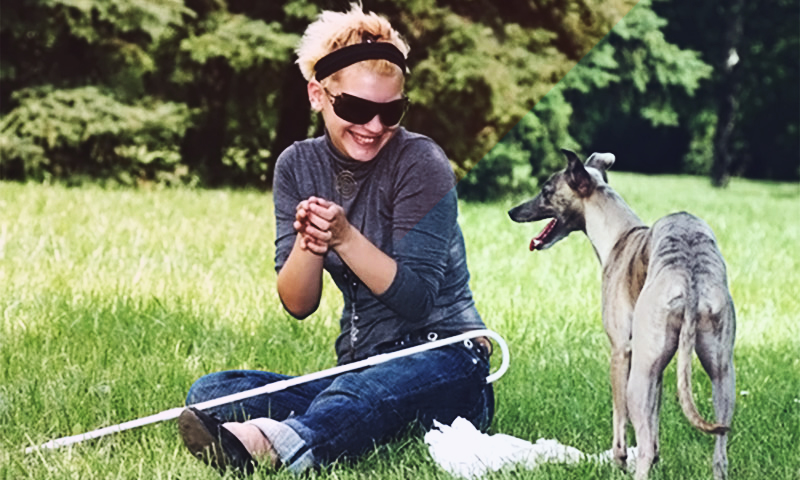Since I started working with Blind InSites™, I’ve learned a lot about what people who are blind have to put up with from us sighted folks. Sometimes it’s in the form of well-intentioned, but unnecessary help. Other times it’s in the form of comments and assumptions about what people with vision loss can or cannot do.
I won’t perpetuate stereotypes about blindness by listing out some of the cringe-worthy things I’ve heard and read, but I will share 3 things I’ve learned about blindness and people who are blind.
- There are lots of types of blindness.
When thinking about blindness, a lot of people think about someone who sees nothing, nada, zilch. According to the American Foundation for the Blind, “only 18 percent of people who are visually impaired are classified as being totally blind and the majority of them can differentiate between light and dark.”
So then, what is blindness? As the case may be, it depends on who you ask.
To be legally blind, a person’s vision must have:
- no better than 20/200 corrected vision in the better eye, or
- a visual field not extending beyond 20 degrees in the better eye.
The legal definition of blindness is used to determine a person’s eligibility for certain governmental benefits. Other organizations define blindness more broadly.
- The National Federation for the Blind defines blindness as anyone whose “sight is bad enough—even with corrective lenses—that they must use alternative methods to engage in any activity that persons with normal vision would do using their eyes.”
- The World Health Organization defines blindness simply as “the inability to see.”
Sight can be limited in various ways, including the field of vision and visual acuity (sharpness or clarity), and that means blindness looks different from person to person. Some people describe what they can see as shadows. Others have pinhole or tunnel vision. Someone once described blindness like this: seeing a piece of paper on the floor across the room and then tripping over an elephant on the way to pick it up!
- People with vision loss do lots of really cool things, and everyday things, too.
People who are blind are doing some adventurous and pretty spectacular things like winning MasterChef, competing in triathlons, setting marathon records, and scuba diving. I’ve never done any of those, so color me impressed. They are also doing everyday things like raising children, traveling, and working.
- In a world made for the sighted, there’s no one-size-fits-all accommodation
The ADA requires braille signage in public buildings, and so I had assumed that most people with vision loss read braille, and that braille is a foundational accommodation. Actually, only about 10% of people who are blind read braille, and there are a variety of tools that help people who are blind do the things they want to do with confidence and independence.
- The white cane is a mobility tool, and for many people with vision loss it’s also a symbol of independence. There are multiple types of white canes—some fold up for easy storage, some are extra long, and some support weight-bearing. Check out these 10 fun facts about the white cane.
- Guide dogs provide both enhanced mobility and furry, four-legged companionship.
- Technology is providing more and more options for those with vision loss. Text and screen readers convert the written word to audio. Apps help with facial and product recognition and crowdsourcing information. And self-driving cars may soon be taking the streets. Technology makes lives easier in many ways, yet we’ve heard from many people that keeping up with updates and changes, especially in the user interface, can be quite challenging.
Over the next few weeks, we’ll be featuring people with vision loss, so you can hear about their experience in their own words. Also, stay tuned for interviews with our founders, Darwin and Armand, to learn about their own vision journeys.


My daughter is blind, so I want to make sure that she can get around easily. It makes sense that using braille signs would be beneficial. That seems like a great way to ensure that she can navigate the house properly.